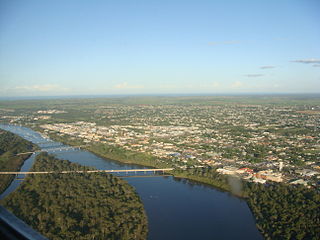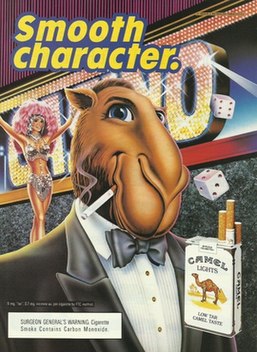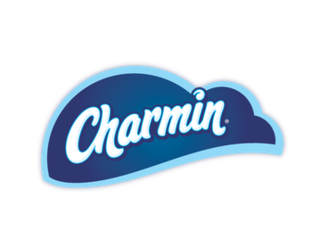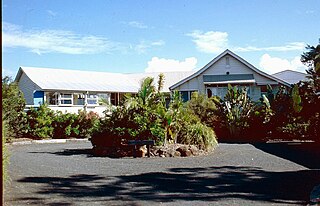A series of advertisements featuring the Bundaberg Rum bear, a polar bear known as Bundy R. Bear, was produced by advertising agency Leo Burnett to align the product 'with a larrikin approach to Australian mateship'. [1] The Bundaberg Rum bear first appeared in 1961. It was designed to soften rum's aggressive image and broaden its appeal from the traditional older male drinker to a more sociable audience. [2]
The advertisements have been cited as a favourite among Australia's youth. [3] Bundaberg Rum has also been criticised for targeting its advertising towards young people and boys, through television commercials during NRL broadcasts, and other promotions. [4] [5]

Advertising is a marketing communication that employs an openly sponsored, non-personal message to promote or sell a product, service or idea. Sponsors of advertising are typically businesses wishing to promote their products or services. Advertising is differentiated from public relations in that an advertiser pays for and has control over the message. It differs from personal selling in that the message is non-personal, i.e., not directed to a particular individual. Advertising is communicated through various mass media, including traditional media such as newspapers, magazines, television, radio, outdoor advertising or direct mail; and new media such as search results, blogs, social media, websites or text messages. The actual presentation of the message in a medium is referred to as an advertisement.

Bundaberg Rum, colloquially known as Bundy, is a dark rum produced in Bundaberg East, Queensland, Australia, by the Bundaberg Distilling Company. In 2010, the Bundaberg Distilling Company was inducted into the Queensland Business Leaders Hall of Fame.

The polar bear is a hypercarnivorous bear whose native range lies largely within the Arctic Circle, encompassing the Arctic Ocean, its surrounding seas and surrounding land masses. It is the largest extant bear species, as well as the largest extant land carnivore. A boar weighs around 350–700 kg (770–1,540 lb), while a sow is about half that size. Although it is the sister species of the brown bear, it has evolved to occupy a narrower ecological niche, with many body characteristics adapted for cold temperatures, for moving across snow, ice and open water, and for hunting seals, which make up most of its diet. Although most polar bears are born on land, they spend most of their time on the sea ice. Their scientific name means "maritime bear" and derives from this fact. Polar bears hunt their preferred food of seals from the edge of sea ice, often living off fat reserves when no sea ice is present. Because of their dependence on the sea ice, polar bears are classified as marine mammals.

Bundaberg is a city in the Bundaberg Region, Queensland, Australia, and is the tenth largest city in the state. Bundaberg's regional area has a population of 70,921, and is a major centre of the Wide Bay–Burnett geographical region. The Bundaberg central business district is situated along the southern bank of the Burnett River, about 20 km (12 mi) from its mouth at Burnett Heads, and flows into the Coral Sea. The city is sited on a rich coastal plain, supporting one of the nation's most productive agricultural regions. The area of Bundaberg is the home of the Taribelang-Bunda peoples. Popular nicknames for Bundaberg include "Bundy" and "Rum city". The demonym of Bundaberg is Bundabergian.

A television advertisement is a span of television programming produced and paid for by an organization. It conveys a message promoting, and aiming to market, a product or service. Advertisers and marketers may refer to television commercials as TVCs.

Joe Camel was the advertising mascot for Camel cigarettes from late 1987 to July 12, 1997, appearing in magazine advertisements, billboards, and other print media.

Charmin is an American brand of toilet paper manufactured by Procter & Gamble.

Birds Eye is an American international brand of frozen foods owned by Conagra Brands in the United States, by Nomad Foods in Europe, and Simplot in Australia.

Alcohol advertising is the promotion of alcoholic beverages by alcohol producers through a variety of media. Along with tobacco advertising, alcohol advertising is one of the most highly regulated forms of marketing. Some or all forms of alcohol advertising are banned in some countries. There have been some important studies about alcohol advertising published, such as J.P. Nelson's in 2000.
Fast food advertising promotes fast food products and utilizes numerous aspects to reach out to the public.

Honey Monster Puffs are a honey-flavoured breakfast cereal made from sugar-coated wheat sold in the United Kingdom. The cereal was originally sold as Sugar Puffs, but was re-branded in 2014. It was labeled as Honey Monster Sugar Puffs for a time. The cereal is known for its Honey Monster mascot, a large, hairy, yellow creature introduced in 1976. In the U.S., a similar cereal is Honey Smacks.
Advertising to children refers to the act of advertising products or services to children as defined by national laws and advertising standards.
The drop bear is a hoax in contemporary Australian folklore featuring a predatory, carnivorous version of the koala. This imaginary animal is commonly spoken about in tall tales designed to scare tourists. While koalas are typically docile herbivores, drop bears are described as unusually large and vicious marsupials that inhabit treetops and attack unsuspecting people that walk beneath them by dropping onto their heads from above.
Oakwood is a rural locality in the Bundaberg Region of the greater Wide Bay region of Queensland, Australia. In the 2016 census, Oakwood had a population of 331 people.

Bundaberg East is a suburb of Bundaberg in the Bundaberg Region, Queensland, Australia. In the 2016 census Bundaberg East had a population of 2,784 people.

Kalkie is a suburb of Bundaberg in the Bundaberg Region, Queensland, Australia. In the 2016 census, Kalkie had a population of 2,692 people.
Bundaberg West is a suburb of Bundaberg in the Bundaberg Region, Queensland, Australia. In the 2016 census Bundaberg West had a population of 2,500 people.
Bundaberg Rum, a product of Queensland, Australia, has a polar bear for a mascot, Bundy R. Bear. Bundy has starred in a number of television advertisements